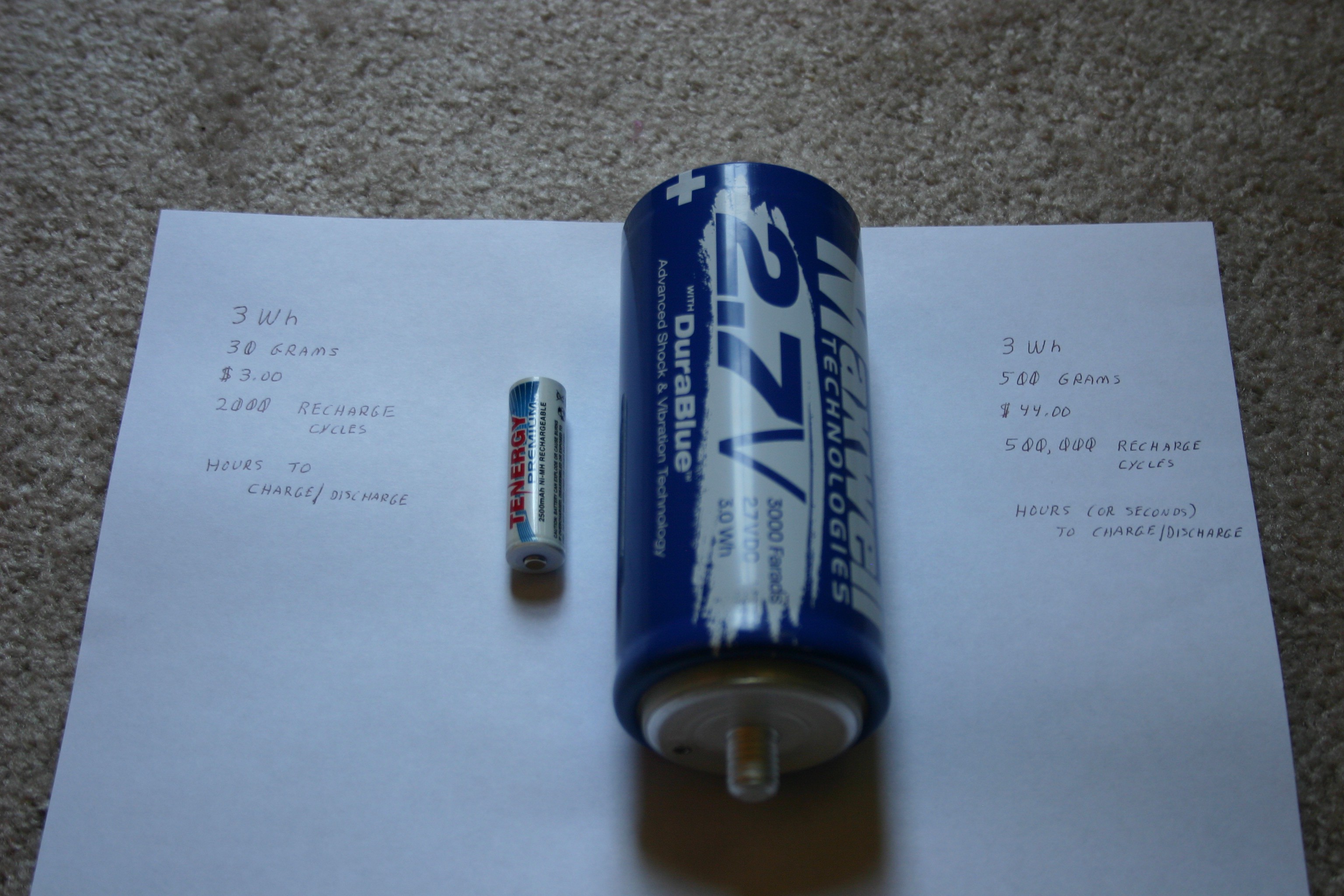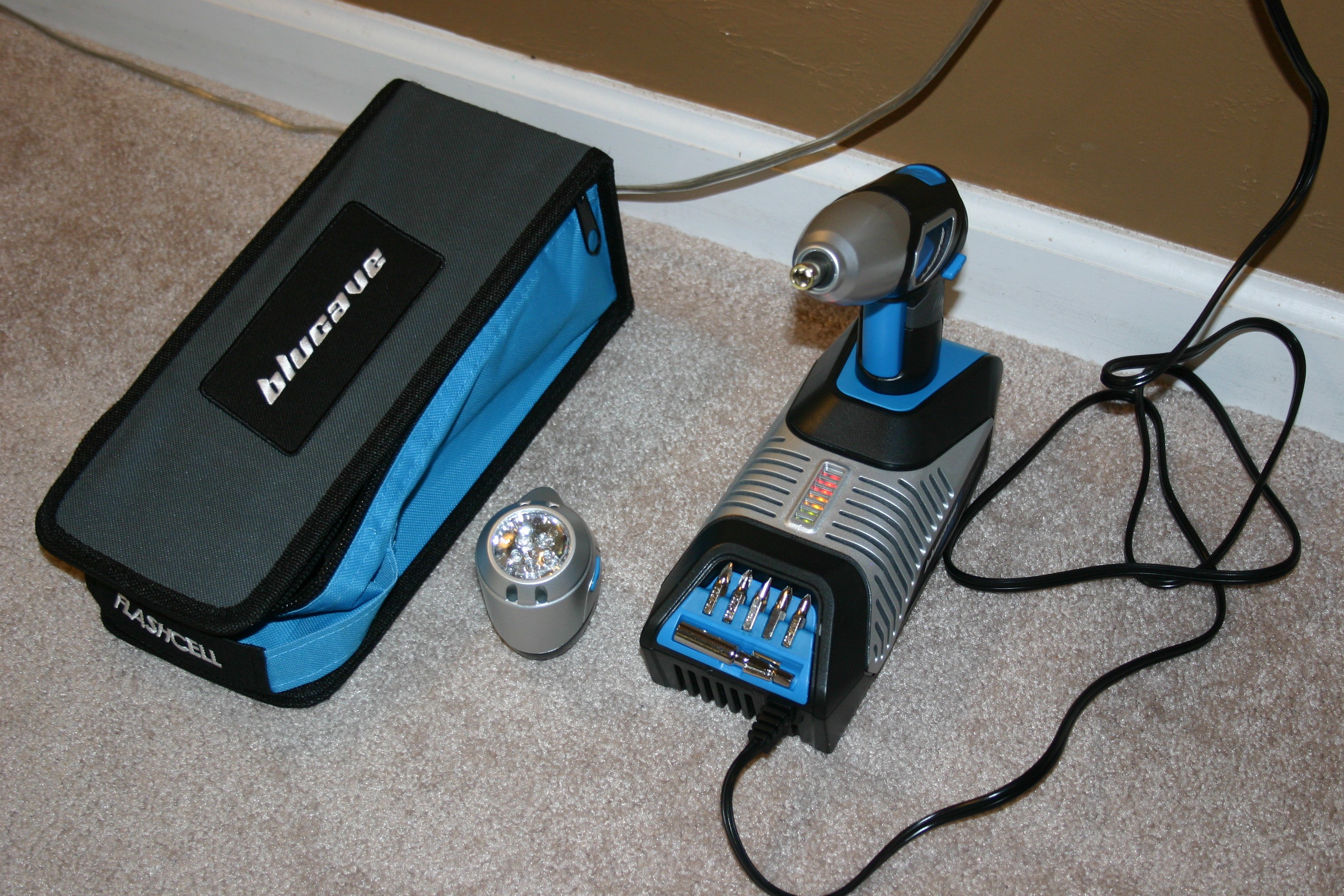If you are a hacker, interested in doing things differently, here's some basic information regarding ultracapacitors.

For a fast "rule of thumb" comparison, 1000 farads at 2.7 volts amounts to about one watt hour of energy storage. This means the 3000 farad capacitor above stores about the same energy as the NiMh AA cell pictured above. Using a La Crosse BC-700 charger, I charged the AA cell above (rated at 2500 mAh) at 500 mA--discharged at 250 mA--and recorded a capacity of 2330 mAh. The capacity and number of charge/discharge cycles of batteries depends on battery chemistry and charge/discharge rates.
I took five 350 farad capacitors (in series) and charged them to 12.72 volts. After 24 hours (no load attached), the voltage had declined to 12.57 volts. After 48 hours, the reading was 12.50 volts. Capacitors will lose noticeable charge in a matter of days.
A 30 gram battery (NiMh) is comparable to a 500 gram capacitor. Clearly, batteries are the winners in this category.
Cost--here's an interesting area. First, a little history. In 2009 I purchased twelve 350 farad capacitors and they cost $23.00 each at the time. Today, the same capacitors from the same company (tecategroup.com) cost $10.75 each in quantities of ten or more. So, the cost is coming down. Using our comparison above, a $3.00 battery can be good for 2000 charge cycles--the $44.00 capacitor is good for 500,000 charge cycles. If you had a need to charge/discharge 500,000 times, you would need 250 batteries to accomplish the task ($750. versus $44.00). So, are there any consumer products utilizing ultracapacitors?

Yes--this screwdriver/flashlight charges in 60 seconds and is currently available on Amazon.com for about $21.00. This appears to be a product that was launched for $60. and didn't make it, so don't expect it to be around forever. Coleman made a capacitor powered screwdriver a few years ago (I owned one), but I can't speak to it's long term functionality as I tore it apart for all the good pieces it contained.
Unlike batteries, the voltage steadily declines on a capacitor; meaning that more circuitry is required to keep the output usable.
Ultracapacitor sales do not target hackers or consumers--they are intended for rail systems, trains, utility vehicles; that sort of device. Look at the "bolt" connectors in the top picture. The M12-1.75 bolt is about one half inch in diameter. We're not talking about 300 mA discharge and 10 amp charge rates. These things are designed to move serious amps in a hurry.
That being said, if (like Mato) your goal is to charge quickly and get back into service (hand tools, flash photography, robots, toy vehicles) capacitors deserve a look.
When my 9000 farads (really 1000 farads at 8.1 volts) are operational, I'll provide more information on charging and discharging in the real world.
 Mike Rigsby
Mike Rigsby
Discussions
Become a Hackaday.io Member
Create an account to leave a comment. Already have an account? Log In.
i hope you put a hand crank dynamo on the super capacitor screwdriver and make a hand crank screwdriver. Where i live they lock people in rooms and dont let them leave or speak to them just liks prisoners of war. I hope you don't live in the same setting
Are you sure? yes | no